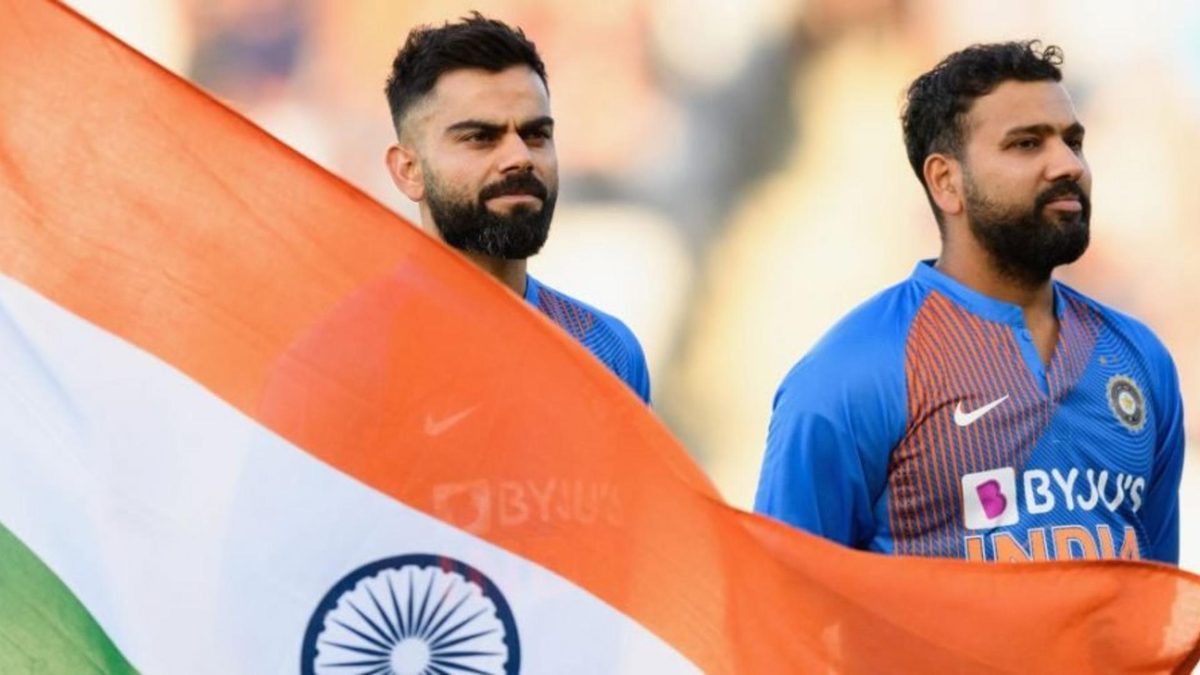
Reports suggesting a shift of power from Virat Kohli to Rohit Sharma are nothing new, and there might be little fuel in such rumours, but a switch in leadership might have more multiple benefits, writes Aadya Sharma.
Unless you are living under a rock, you must have, in one way or another, come across the never-ending fan war around the two powerhouses of Indian cricket, Virat Kohli and Rohit Sharma. Both factions of supporters swear by their respective heroes, one is an all-format titan who has led India since 2014; the other is a white-ball superstar who has a ridiculously good leadership record in domestic cricket. Both coexist in the Indian team, thriving and succeeding through all the chatter, rumours and tittle-tattle around them. If gossip is to be believed, there’ve been ‘rifts’ too, even though Kohli and coach Ravi Shastri have rubbished such claims publicly. It doesn’t end there though – every move is scrutinised and each rumour blown out of proportion.
On Monday, then, chatter around the two reached a crescendo, when a report by Times of India stated that it is possible that Rohit will replace Kohli in white-ball cricket sooner rather than later. It wasn’t the first time we are hearing this, and it won’t be the last time. The rumours fizzled out when there was a counter-story quoting another BCCI source who rubbished the claim, but it makes you wonder if there’s actually merit in the so-called shift of power actually coming to fruition.
The end of the 2021 T20 World Cup will also mark the culmination of a long-standing reign, the Kohli-Shastri rule, which saw India reach never-seen-before heights, especially in Test cricket. The success in red-ball cricket has even resulted in them being dubbed as an all-time great Indian side. In white-ball cricket, though, the extent of success remains debatable.
For a team that won three ICC titles across six years from 2007 to 2013, there’s been obvious barrenness in the trophy cabinet. Now, trophies alone aren’t a metric to judge how good a team is, and silverware is what separates good teams from great ones. Under Virat Kohli, India have been a sound white-ball force, but the continuing trend of near-finishes and knockout-game-stumbles have, time and again, raised questions about leadership and management.
It’s unfair to pin the lack of trophies on Kohli’s captaincy alone, for he’s proven to be an astute leader, galvanising his team to chase excellence just like the way he does on an individual front. There’s been great impetus on the development of players, and a host of inspired changes that bore fruit, but if, come November, India are out of the title race once again, there will be the obvious temptation to look beyond. In Rohit, there’s a great captain lying in wait, having stacked up an envious record as the skipper of IPL’s most successful franchise.
On the surface, Rohit appears unflappable, a little like Kohli’s calm predecessor, MS Dhoni, quietly going about his job on the field without any additional spillage of emotions. When he’s leading Mumbai Indians (which, should not be forgotten, is a great set-up in itself), most tactical moves end up becoming masterful decisions, and the calculated manner in which he employs his resources, combined with his overall record in knockout games, really makes you want to see a bit of the same (or more) in international cricket.
Often, Rohit’s IPL credentials are put against Kohli’s relatively mellow record with RCB – while that is a superficial method of judging two captains, Rohit’s five titles do present a strong case, and while there’s no metric to absolutely judge the quality of a skipper, it isn’t outlandish to claim that, all in all, Rohit might actually be a better leader in white-ball cricket when it comes to taking the team past the finishing line.
Now, as India prepares to enter a new, post-Shastri phase, there will be more questions, critics who can only be silenced by silverware. It’s also an important junction in Virat Kohli’s career – at 32, the batsman should be in his prime, but his ascent towards all-time greatness has decelerated – a man who scored a combined 17 ODI hundreds between 2017 and 2019, hasn’t scored one in the last two years. Maybe, it’s time to change things.
As Kohli advances in his career, there will reach a point where he’ll have to take a step back – to be the captain in all three formats, lead an IPL team, and be arguably the best batsman in the side is a lot for one person, and so far, he’s done a great job. This T20 World Cup could break the jinx, and we could actually see Kohli, the batsman, in his element all over again, but each event is a reminder that there’s another leader on his side, a great one at that, who could share some of Kohli’s load himself. It could push Kohli to allocate more of his mind power on his own batting, and we could then see another period of excellence that he truly deserves.
So, when India’s 2021 T20 World Cup campaign wraps up, it could actually be a moment to reflect and change, to transfer power and refresh ideologies, to let the second-in-command himself have a go at gold. There are plenty of ICC events in the next few years, and India will need the best out of Kohli, the batsman. And it can still happen without the burden of leadership, for the next best option is good enough to create a legacy of his own.








